 |
Notes and Highlights for
|
 |
Notes and Highlights for
|
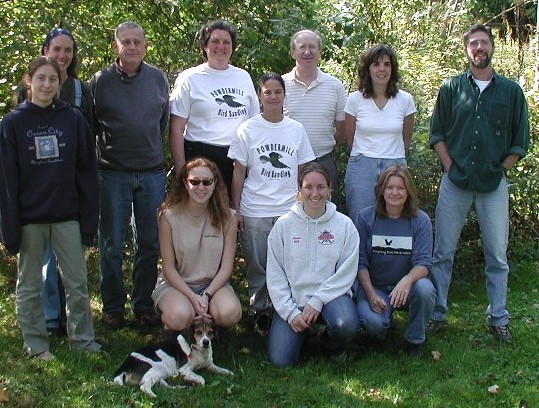
First Fall 2005 Bander Development Workshop Group (left to right): .
Emma DeLeon (Powdermill Avian Research Center Student Intern), Felicity Newell (PARC Research and Banding Assistant), Bob Leberman (founder of the Powdermill bird banding program), Puppy (Mulvihill), Adrienne Leppold (PARC Bander-in-Charge), Jennifer Maxwell, Sandy Polcyn, David Norman (PARC Research Associate), Annie Lindsay (PARC Research and Banding Assistant), Jennifer Hanley, Margaret Fritze, and Bob Mulvihill (PARC Field Ornithology Projects Coordinator).Powdermill's Mike Lanzone (PARC Assistant Coordinator), who also helped
run the workshop, was not available when the above photo was taken.
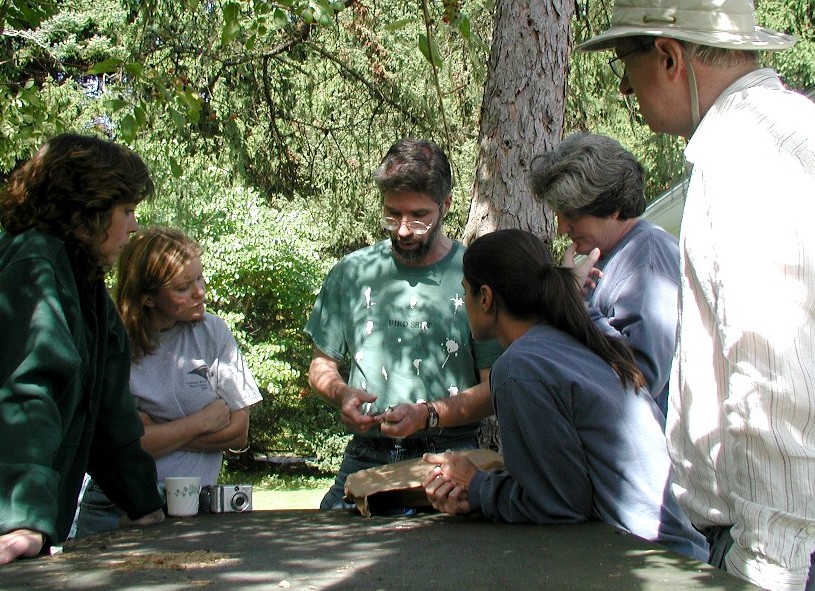
Similarly, an HY-F American Redstart
banded on September 30 was unusual
in lacking any visible yellow
at the bases of its flight feathers.
Next, this rather late HY male Prairie Warbler, our first fall banding of a PRAW in three years
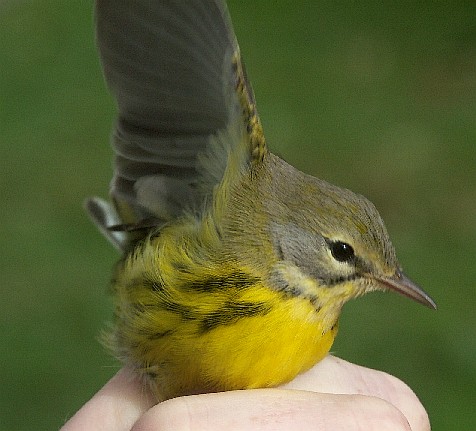
Last, but not least, a characteristically cryptic (Brown) creeper
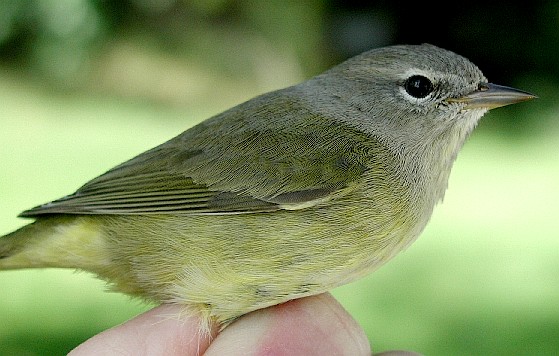
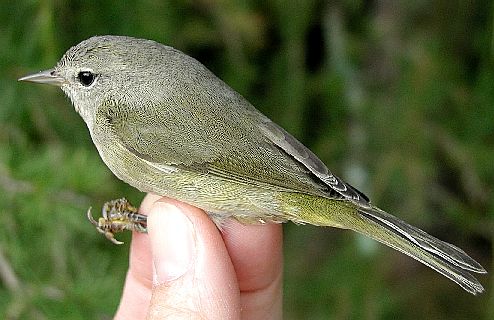
.
- Other new fall species banded over the weekend were Red-bellied Woodpecker (HY female; top photo) and both Black-billed (middle photo) and Yellow-billed Cuckoo (bottom photo).
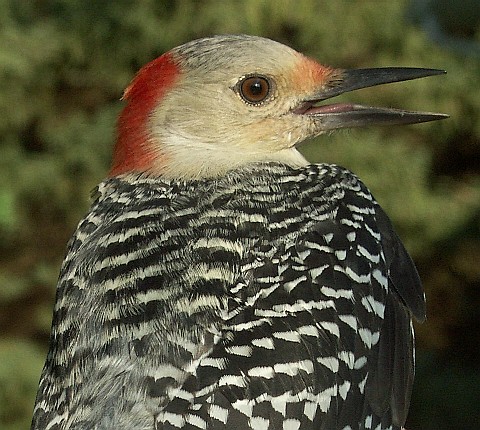
In both cuckoo species, a yellow eye ring is a sign of juvenality, but in the BBCU the eye ring becomes bright red with age, while in the YBCU it changes to a drab olive-gray.
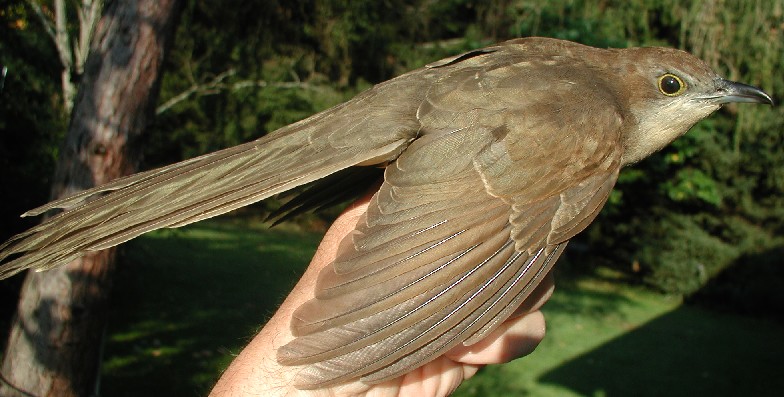
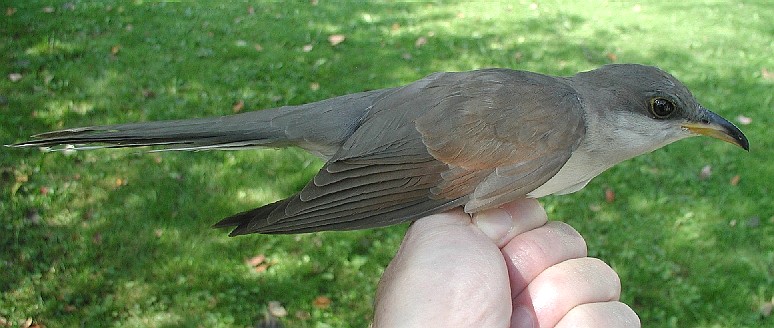
The feet of cuckoos, like those of woodpeckers and parrots, have a so-called zygodactyl arrangement of the toes, with the first and fourth toes pointing to the rear
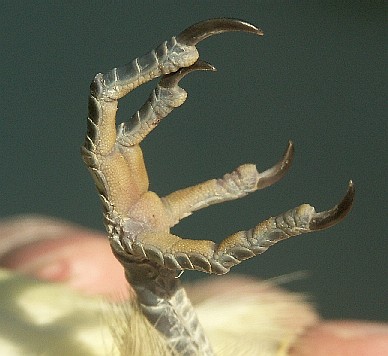
But where the stout bill of woodpeckers is distinctly straight like a chisel, that of cuckoos is strongly decurved like forceps (the better to grab big hairy caterpillars with, presumably!)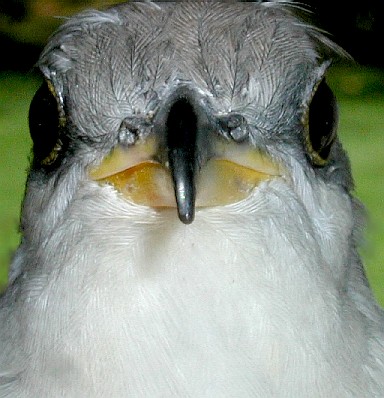
In addition, the tongue, mouth lining, and throat of cuckoos is replete with jagged rear-pointing excrescences, which presumably serve in some way as another adaptation for their specialized feeding upon large hairy caterpillar prey.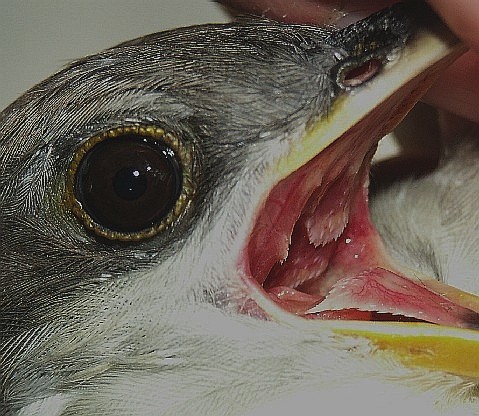
Last Updated on 10/06/05
By Adrienne Leppold and Robert
Mulvihill